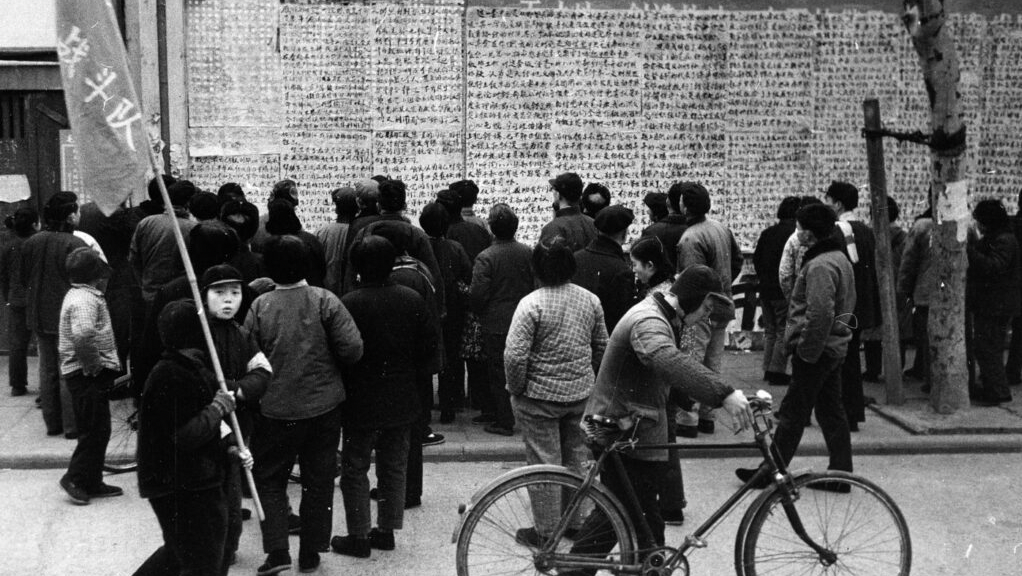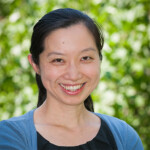As part of the Fairbank Center’s exhibition of dazibao (大字报 “big-character posters”) and woodcuts from 1960s China, we present a four-part series on Cultural Revolution-era artworks. Jie Li, Professor of East Asian Languages and Civilizations at Harvard University, presents part 3 on the exhibitionism of dazibao.
Read Part 1: Reading “Big-Character Posters” by Denise Ho on our blog.
Read Part 2: The Visual Spectacle of “Dazibao” by Xiaofei Tian on our blog.
Read Part 4: Pictoral Posters by Julia Murray on our blog.
The exhibition, “Red and Black Revolution: Dazibao and Woodcuts from 1960s China” is on display at Harvard University’s Fairbank Center for Chinese Studies from November 9 -30, 2017.
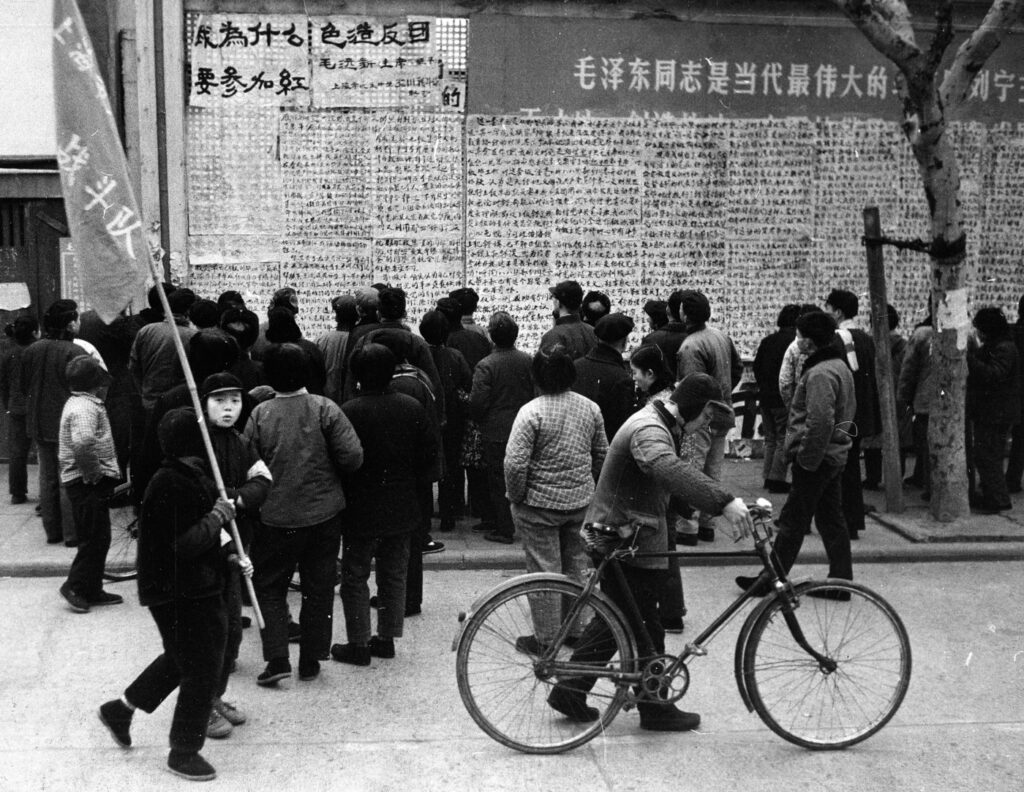
Where were Dazibao?
The makers of these dazibao could not have imagined an exhibition of their “works” at Harvard’s Fairbank Center, but all dazibao were intended for public display of some sort, once covering the walls of streets, schools, and factories. Their big characters were legible from a distance and competed for public attention. Besides repeating slogans and copying from newspapers, dazibao launched personal attacks against individuals well known to a given community. Dazibao were exhibitionist by nature.
Apart from public spaces, dazibao also appeared in residential neighborhoods and even in the homes of their targets. Red Guards posted dazibao full of vicious profanities outside and inside the home of Bian Zhongyun, a middle school teacher in Beijing, before beating her to death in August, 1966. As dazibao’s verbal violence devolved into physical violence, they also functioned like home search warrants and dictated over the accused like a curse. Indeed, dazibao appeared not only on walls, but also on the body, in the form of paper dunce caps and cardboard plaques around the necks of “ox devils and snake spirits.”

Writing Dazibao
How was such nationwide graphomania generated? Cultural Revolution memoirs and oral histories suggest that schools and work units organized dazibao-writing sessions to demonstrate their revolutionary fervor as groups or individuals. Many simply copied editorials from newspapers, while others composed their own content. For some, it was just a calligraphy exercise. In a few cases, dazibao was the pre-digital viral medium that transmitted heterodox thought such as Yu Luoke’s essay “On Family Origin.”
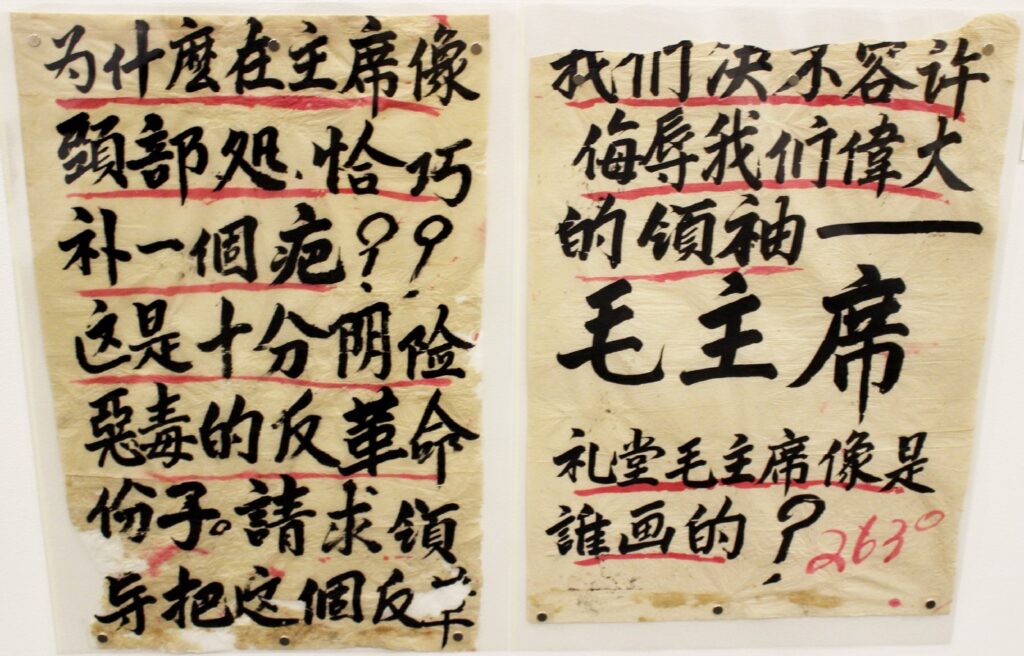
To make revolution local, many wrote dazibao against colleagues, classmates, friends, neighbors, even family members. Dating from the summer of 1966, most dazibao in the Fairbank Center exhibition targeted cadres or coworkers of the same work units. Often denouncing individuals who had already been “exposed,” the dazibao contributed incriminating details privy to their authors: tyrannical treatment of workers, sexual harassment of women, reading of “pornographic literature,” abuse of cadre privileges, or even the very failure to write dazibao. These dazibao articulated existing social tensions and conflicts and sometimes invited rebuttals scribbled in even bigger characters by accused individuals, creating a palimpsest aesthetics and inviting reading between the lines.
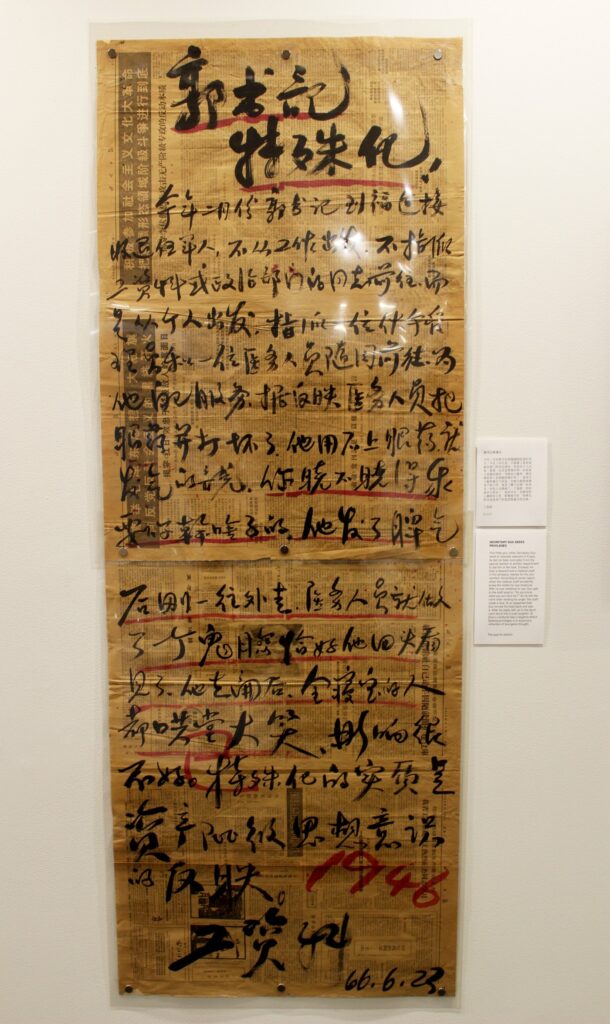
Reading Dazibao
How were dazibao read? Many children growing up in the Cultural Revolution learned to read through the dazibao, which served as their literacy primer. Adults read dazibao much as they would read other “bao” or newspaper, for national and local news to discern where the political winds are blowing, or for tabloid-like gossip. I would like to close with the personal testimonies on reading dazibao from two writers. Shen Congwen (1902–1988) responded to dazibao criticizing him at the Chinese Museum of History in 1966:
“After three days of reading dazibao, I finally understood that the Cultural Revolution movement at our museum has reached full swing. Even an insignificant man like myself can be the subject of a special column with several dozen dazibao listing hundreds of mistakes, written by well-intentioned comrades helping me with thought reform…. Naturally I also feel pain and shock, because my vehement denouncer is XX, a frequent guest of my home…. His dazibao educated me on what it means to “benefit oneself at the expense of others.”
And finally, Yu Hua (1960-) recalls reading dazibao in middle school: “By 1975 people had been numbed into indifference by big-character posters and seldom read the new exposés that sprouted up overnight. Now well on their way to losing all relevance, posters were becoming merely wallpaper…” One day, a dazibao with a cartoon of a couple having sex caught Yu Hua’s eyes: “Sandwiched between revolutionary slogans and frequent quotations of Chairman Mao were exquisite little passages that told the story of a pair of fornicators in our small town…” From reading dazibao as “erotica,” Yu Hua also discovered the power of the human imagination: “Dazibao featured all literary tropes and techniques, from dramatization to hyperbole, metaphor to irony. It was on the street, in front of the thickening layers of dazibao, that I fell in love with literature.”
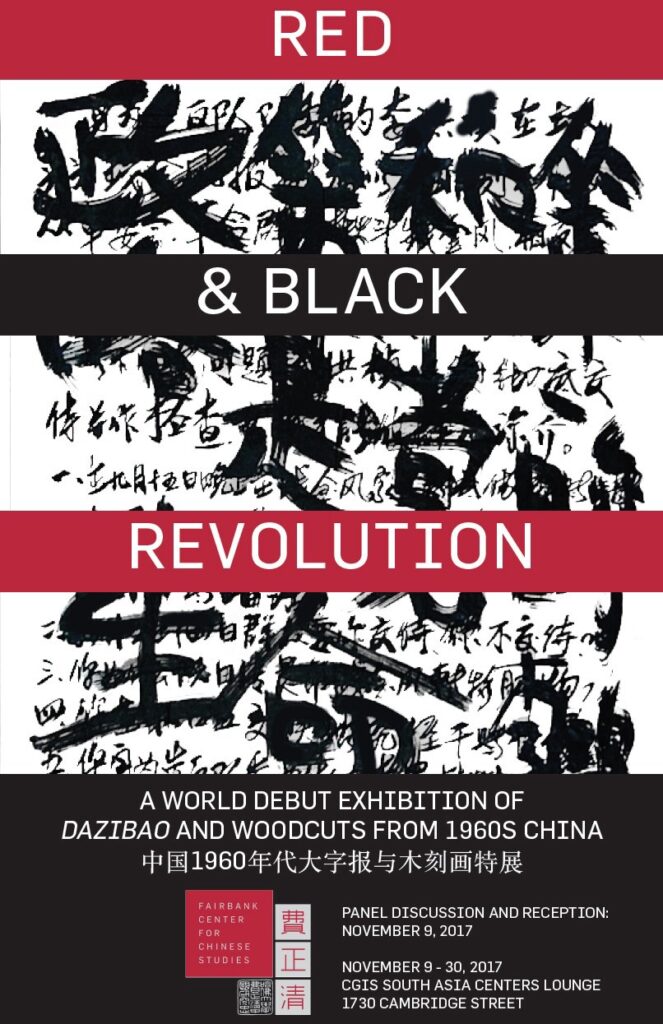
Jie Li is Assistant Professor of East Asian Languages and Civilizations at Harvard University. Her forthcoming book , Utopian Ruins: A Memory Museum of the Mao Era, explores contemporary cultural memories of the 1950s to the 1970s through textual, audiovisual, and material artifacts. She is the co-editor of Red Legacies: Cultural Afterlives of the Communist Revolution (Harvard Asia Center, 2016).
The exhibition, “Red and Black Revolution: Dazibao and Woodcuts from 1960s China” is on display at Harvard University’s Fairbank Center for Chinese Studies from November 9 -30, 2017.
Read Part 1: Reading “Big-Character Posters” by Denise Ho on our blog.
Read Part 2: The Visual Spectacle of “Dazibao” by Xiaofei Tian on our blog.

